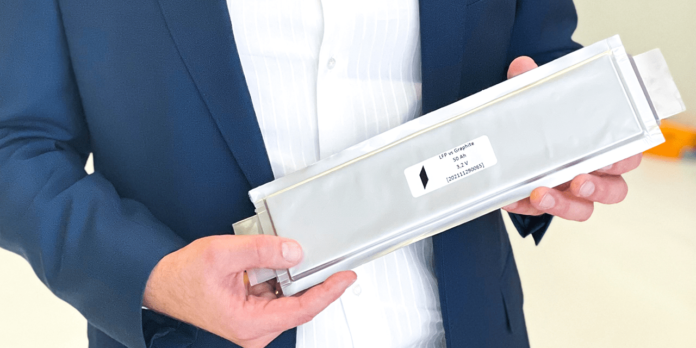On the heels of a series of important milestones for its proprietary 3D-printing technology capable to print lithium ion solid-state batteries, Blackstone Resources will begin the series production of its 3D printed battery cells at its new manufacturing plant in Döbeln, Germany.
Apart from Sakuu that mainly operates on the American soil, the Swiss investment firm that focused on battery technology seems to be the only European company that leverages 3D printing for the production of battery cells.
It presented during an event its LFP cells which are produced using a 3D printing process. (LFP battery (lithium ferrophosphate), is a type of lithium-ion battery using lithium iron phosphate (LiFePO. 4) as the cathode material, and a graphitic carbon electrode with a metallic backing as the anode.).
The company explains that this enables the power storage layers of the battery cells to become thicker, which should increase the energy density by 20%. Blackstone calls this “Thick Layer Technology”. With 220 Wh/kg, the size of the cells can be tailor-made to customer requirements with the process. Indeed, a carmaker with a battery pack installed in the underbody does not have the same requirements than the manufacturer of an electric bus who mounts the batteries on the vehicle roof.
In the same vein, the company said it puts the space savings at 15%, the material savings at 20 euros/kWh and the energy consumption in production is 23% lower.
Ulrich Ernst, founder and CEO of Blackstone Resources, adds, “The patented process relies on an environmentally friendly, purely water-based process and reduces waste materials by 50%. In this way, we are making an important and sustainable contribution to the transport turnaround and in the fight against climate change.”
While Blackstone is starting with lithium-ion cells, the company believes its technology can also be leveraged for other cell chemistries too. This includes solid-state ones, which should increase energy density by another 70%.
Moving forward, Holger Gritzka, managing director of Blackstone Technology, said the firm’s long-term goal is to produce battery cells every second: “The vision – with a single machine park, we print cells in different shapes, different electrodes, and electrolyte materials quickly and cost-effectively on a large scale.”
We may expect its initial target annual production capacity at 500 MWh to be reached by the end of next year. The second phase in the growth plan will therefore target 5GWh per year, and the third phase will eventually aim for over 10GWh.
Remember, you can post job opportunities in the AM Industry on 3D ADEPT Media free of charge or look for a job via our job board. Make sure to follow us on our social networks and subscribe to our weekly newsletter : Facebook, Twitter, LinkedIn & Instagram ! If you want to be featured in the next issue of our digital magazine or if you hear a story that needs to be heard, make sure you send it to contact@3dadept.com






